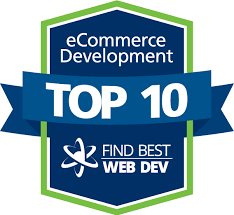If you are going into online selling, you would know that Shopify is one of the most recommended e-commerce platforms used by online sellers to set up their online retail businesses. It makes things quick and simple, but there’s still some Search Engine Optimization (SEO) legwork to do if you want your Shopify store to perform to the best of its ability in search results.
The below SEO guide will point you to tips that are fundamental for maintaining, or perhaps attaining, good search visibility for your Shopify e-commerce store. Follow these easy-to-follow hints to discover all the essentials for improving the SEO of your Shopify store.
The Reasons Why You Should Choose Shopify e-commerce for Your Online Store:
- Highly flexible and can tailor to your specific requirements.
- Easy backend administration
- Shopify has lots of built-in tools
- Advanced e-commerce platform with fantastic Search Engine Optimization (SEO) features.
- Shopify e-commerce platform is easy to use with no coding skills required; you automatically save time and money.
What do you get with the Shopify e-commerce Platform?
- Web-based Content Management System to update your website and online store.
- Meets full W3C standards.
- Fully secure payment gateway.
- Easily Integrates with POS systems.
- Customized website design and full control of HTML & CSS.
- Customer support with technical Advisor help.
There is more to it than a handful of bullet points; see the whole list of Shopify e-commerce features.
SEO Tips For the SHOPIFY e-commerce Platform
So, you have set up Shopify for your online store and want to implement SEO techniques. Shopify is an advanced e-commerce content management system and shopping cart with built-in Search Engine Optimization elements.
E-commerce SEO, however, can be a little different than optimizing other sites. From site structure to structured data, paying attention to how SEO factors work when using Shopify is vital.
Leveraging these SEO elements enhances the likelihood of you getting traffic and sales to your website from search engines such as Google, Yahoo, and Bing.
Some factors, however, need more attention than others.
Following are the 12 major tips that need to be covered for improving the SEO of your SHOPIFY store:
- Remove duplicate content from your Shopify store.
- Create a unique page title and write meta descriptions for your pages.
- Optimize your store images.
- Link your products page from the home page.
- Technical SEO for SHOPIFY is mandatory.
- Canonical tag and Domain Canonicalization.
- Add your sitemap.xml to Google Search Console.
- Google Analytics Integration.
- Build High Quality backlink to your shopify store
- Don’t inadvertently neglect to set up 301 redirects for old product pages
- Install the free Product Review App.
- Configure the blog feature in your Shopify Platform.
1. Remove Duplicate Content From Your Store
Duplicate content generally refers to text that completely matches copy on another web page. That page could either be on your own site or on someone else’s.
For any Shopify website, duplicate content can be a disaster if identified by a search engine, such as Google, Bing, and Yahoo or others. Although search engines are quite tolerant of internal duplication, external duplication, where it may appear you’ve copied text from another site, could be more likely to have an adverse effect on search engine rankings, and your store could be penalized by search engines.
Many Shopify stores have duplicate content. The good news is, if you fix the problem, it can have a good impact on your search performance.
2. Create Unique Page Title and Write Meta Descriptions for Your pages
Page titles and meta descriptions are important elements of any website for search engine rankings. The title tag and the meta description tags should include keywords related to the page content, whether it is a blog post about leather types or a product page for a pair of boots.
This unique page metadata helps search engines understand what the page is all about. The better it understands, the better it might be able to place you in search results.
Each title and description must be written according to best practices, so you are making your site as SEO friendly as possible. The target word count for the title should be 60 characters while it is 160 characters for the description tag.
PRO Tip: Avoid using stop words like “the”, “an,” and “a” “or”, “but” “thus,” and if”.
Use this format: Primary Keyword – Secondary Keyword | Brand Name
3. Optimize Your Shopify Store Images
Image optimization is necessary for your Shopify store as another means of improving presence in Google and other search engines. For years, alt tags have been used by search engines as a shortcut for understanding what the images on a website are about.
All your images must include the proper alt tags with relevant keywords. Because if someone is searching for images of red boots, for example, images from your site will have a better chance of appearing if your images of red boots have alt tags that offer a good description.
There’s also accessibility to consider. Buyers with vision trouble might use a screen reader to navigate your site. These can use alt tags to verbally describe to the user what the image is of. The better your alt tag, the better you’re pushing someone toward putting something in their shopping cart.
Good accessibility standards are also one of the many, many ranking factors search engines use to assess your site.
4. Always Link your Products Page from the Home Page
Your home page is typically the center of your website and also the most powerful page among all others. Creating navigation links on your homepage gives a clear path to your site visitors so they can maneuver around your shop, whatever your site structure.
Not to link to your collection pages (often called category pages) from a home page is a common mistake many store owners make at some point. As a result, your important pages may be hidden deep in the store, with visitors unable to find them easily.
Of course, if you don’t have many products, linking to each one might be more useful than making a user visit a collection page first. But if you have anything more than perhaps a few dozen products, consider assigning them to collections. The Shopify help center has a guide on collections and how to create them.
Pro tip: Make sure all of your important collection or product pages are reachable at the top of the homepage. By doing this, you’re putting some of your most valuable pages in easy reach of your visitors. You can include a search box also.
5. Technical SEO for SHOPIFY is Mandatory
Technical SEO refers to any Search Engine Optimization activities/elements that do not include the content part.
In technical SEO, a webmaster needs to ensure the followings elements with proper search engine guidelines:
- Checking a robots.txt file so bots can crawl the site.
- Ensuring the site has a sitemap.xml file and adding the sitemap.xml to Google Search Console.
- Creating a Google Search Console account and verifying your ownership.
- Creating and installing Google Analytics.
- Validating HTML and CSS.
- Correcting any crawl errors and redirect issues.
- Proper use of heading tags (H1, H2, H3, and so on).
- Correct application of canonical tags and domain canonicalization.
- Using tools like GTMetrix and Google’s PageSpeed Insights to analyze the site’s speed on all devices. The SEMrush Site Audit bot will also give a breakdown of speed performance.
6. Canonical Tag and Domain Canonicalization
Canonicalization refers to declaring that one domain or page is the primary version when there are multiples of the same thing.
If one style of boot, for example, comes in many colors and you have pages for each shade, you might want to canonical to one primary version. Because it is likely your product descriptions will all be near identical. To search engines, you’re effectively saying, ‘I know there are lots of identical pages. Ignore all of them, but this single URL.’
It discourages search engines from thinking you’re trying to pad out your site with duplicate content. Think back to the section about duplication, and you’ll know why this can be bad: poor search engine rankings.
7. Add Your Sitemap.xml to Google Search Console
A sitemap is a file where you can add all the pages of your website to tell Google and other search engine spiders what to crawl/index on the website on a regular basis. Shopify stores automatically generate a sitemap.xml file that contains all the links to all the pages of your website, including products, giving a great overview of your site structure.
But that’s only part of the job, should you want picture-perfect SEO.
You need to submit your sitemap to Google Search Console (likewise Bing Webmaster Tools if you think Bing could be a valuable source of traffic for you) so your site can be easily crawled and indexed.
In Shopify, the sitemap is located at the root directory of the store, e.g., example.com/sitemap.xml.
8. Build High-Quality Backlinks to Your Shopify Store
Do you want to enhance the number of visitors to your Shopify store? Quality backlinks are part of the trinity of SEO, along with content and technical SEO.
Beyond simply having a site everyone loves, they are tricky to ‘manufacture.’ But an easy way to get quality and targeted traffic quickly is by creating a profile of your store on Amazon, Yelp, and other similar websites. And, you will get strong backlinks as well as traffic in return, which will be a booster for your Shopify website.
There are other routes, though. Have a read through this guide on link-building techniques for engagement, and we have a post that explains how to use the SEMrush Link Building tool in all kinds of valuable ways that can give you one up on your competitors with minimum time and effort.
9. Don’t Neglect Setting Up 301 Redirects for Old Product Pages
In Shopify, if your product goes out of stock and you want to tell the search engines that a page is no longer available and permanently moved to a new page, 301 redirects are the perfect solution.
What is a 301 redirect?
A 301 redirect is a way of sending users and search engines away from one page and onto another automatically. It is a great way of dealing with a URL that no longer exists or that you don’t want people to visit anymore. You want to make sure the user or search engine goes to a useful page and doesn’t just get a ‘404 Not Found’ page, which could potentially end their customer journey with you.
Perhaps you have deleted pages for items you know are not going to be in stock again. Without setting up a 301 redirect to a new page, there might be some potential customer drop because the page ranked in search engines or was linked to from another site.
You want to lead the visitor to a new page, and the solution is to create a URL redirect via your Shopify admin portal.
For more on redirects, see our complete guide to 301 redirects.
10. Configure the Blog Feature in Your Shopify Platform
Your Shopify store comes with a built-in blog feature. Writing blog posts is a great way to build your audience, earn more exposure, and drive more organic traffic and sales for your online business.
It is highly recommended to add regular, quality content because:
- Search engines have a tendency to send users to frequently updated sites.
- Good and helpful content makes your site more useful for visitors. Search engines want to send users to sites that are going to help answer their queries.
- It helps search engines understand which topic, or topics, your site has some authority on.
- The posts you write also have a chance of ranking, which makes them another potential traffic source.
Shopify itself has a full explanation of how to add to and edit your blog on the Shopify platform. It even covers how to use iOS and Android apps.
Not sure what to write about?
Keyword research is useful – looking up what people are typing into search engines and how often those searches are performed. It can give you a good idea of what sorts of questions there might be around the things you sell. Do you have the knowledge to answer them?
If so, the search volumes you find in your keyword research can help you prioritize which topics to write about.
Conclusion
All of the above mentioned 12 tips may not include everything you should know about Shopify SEO, but by following the above tips, you will be definitely ahead of your competitors. And, hopefully, we will see significant traffic from search engines.











